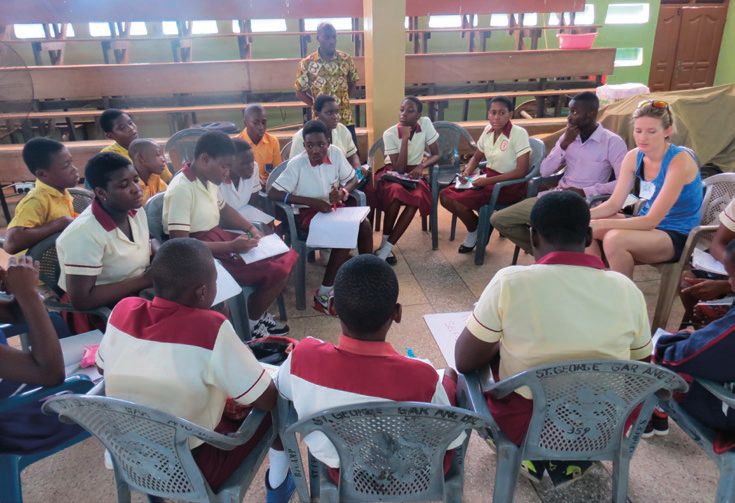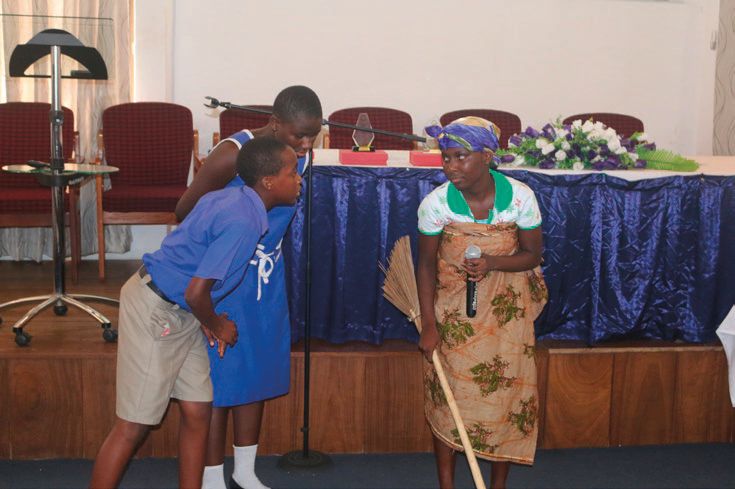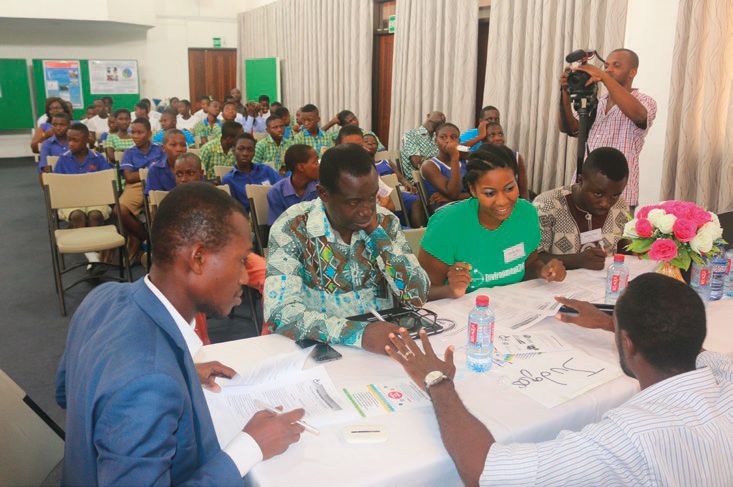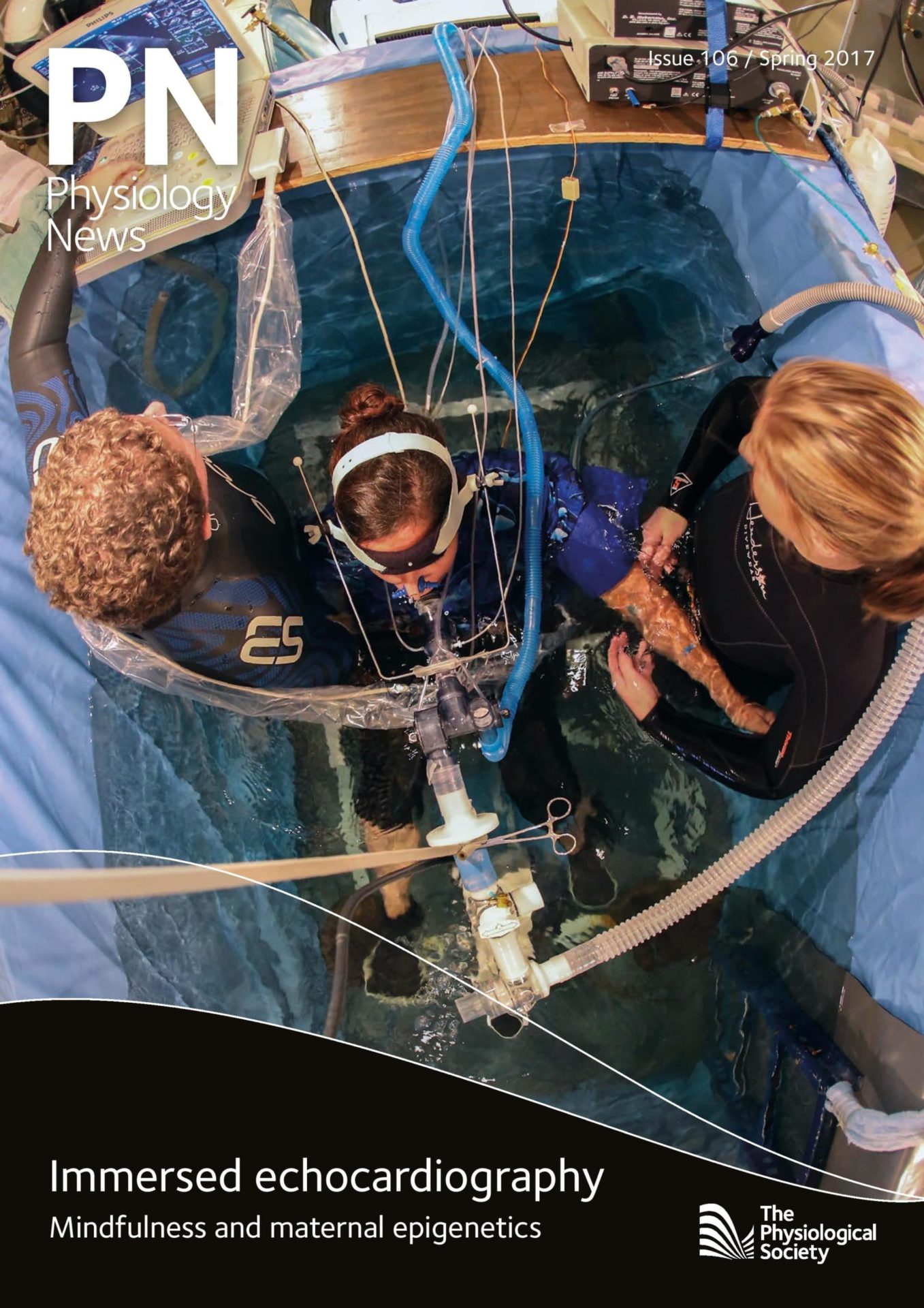
Physiology News Magazine
SHAPE: Shaping Healthy Attitudes and Protecting the Environment
Membership
SHAPE: Shaping Healthy Attitudes and Protecting the Environment
Membership
Hephzi Angela Tagoe
PhD candidate at UCL Great Ormond Street Institute of Child Health
https://doi.org/10.36866/pn.106.32

SHAPE, an acronym that stands for Shaping Healthy Attitudes and Protecting the Environment, connects high school pupils in Ghana with tertiary level students and STEM professionals to work together on a 12-month challenge. GhScientific, a Ghanaian-based organisation with a focus on science communication and public engagement, organised the project. The Wellcome Trust has provided funding for the SHAPE project.
For the pilot, we recruited 104 junior high school pupils from 16 private and public schools and placed them in eight teams. Teams were tasked with identifying health conditions with environmental triggers and crafting innovative solutions to reduce these environmental triggers. Each team was then paired with two students to serve as project ambassadors to support the development of their solutions. A professional served as their designated mentor to advise on the scientific content of the project.
We launched in December 2015 at the annual meeting of the Ghana Science Association with representatives from the various schools, invited guests, and selected media houses. The meeting’s theme was ‘National Development Through Scientific Innovation’, and the SHAPE project served as a showcase of how the scientific community can engage with the public to promote an interest in research.
Science education in Ghana has historically been challenged with a lack of creativity in lessons and minimal translation of theory into practise. Many public schools are without laboratories, and pupils are often left to their imagination. Engaging pupils with projects such as SHAPE gives them an opportunity to better appreciate a future with science. Bearing this in mind, it was important to train the teams in several capacity-building workshops to better prepare them for the task.

Partnerships
We formed a partnership with the Grameen Foundation to provide volunteers from a Google international reach program to run these workshops. They taught the teams the scientific method of conducting research, including data collection and analysis, and communication and presentation skills, including presenting with PowerPoint and preparing posters, and general skills, including time management, idea generation and teamwork. The last week of each workshop was held with the ambassadors and teachers on effective project management.
Through partnership with the Ghana Science Association, we had a network of professionals to support the project. The teams had the chance to visit a number of research departments. The Multimedia Group, one of the largest media houses in Ghana, also supported the project by providing a media platform to publicise the project. They interviewed the individual teams and aired the interviews on a weekly basis and also showcased the SHAPE project in a segment about the need for public engagement with science on their morning breakfast show.

The teams
With teams formed and workshops completed, the pupils were ready to take on the challenge. They met regularly over the course of the project to research their selected topics and compile their findings, which were showcased at the closing ceremony.
The project from the 8 teams were:
- The Effect of Carbon Cycle Disruptions (The Sparkling Stars of Science)
- Impact of Poor Human Waste Disposal (The Blessed Blue Kings)
- You Are What You Breathe (Scholars of Nativity)
- Alternative Solid Waste Management (The Eco-Warriors)
- A Story of Water, Waste and Marketplaces (Agents of Change)
- Creating Sustainable Environment Clubs (Brainstormers)
- Alternative Approaches to Reducing the Impact of Mosquitoes on Health (Youth Environment Activists)
- Air Pollution In Urban Communities (St Maurice Champions)

The closing ceremony
In a room full of students, teachers, parents, invited guests and professionals from the scientific community, the teams took turns showcasing their various projects to the audience and a panel of judges. They also put together poster presentations. The impact of the capacity-building workshops and success of the project was evident in the final presentations. Their growth over the course of the project came through as they confidently shared and answered questions on their chosen health condition, identified environmental triggers and explained their innovative solutions to reducing the impact of these environmental triggers on health. The Most Practical Project, the Most Innovative Project and the Best Poster Presentation each received awards. A final award went to the Best Teacher.
Conclusions
The SHAPE project set out to show that by equipping pupils with the right tools and resources they could excel regardless of their background. The pupils indeed showed this to be true. It also set out to encourage more higher-education students and STEM professionals to take up public engagement with science and to promote collaborations on STEM educational projects for maximum impact. Based on the success of the pilot, GhScientific intends to run the project annually to give the opportunity to as many pupils as possible. The project diary is available online at shape.ghscientific.com.
